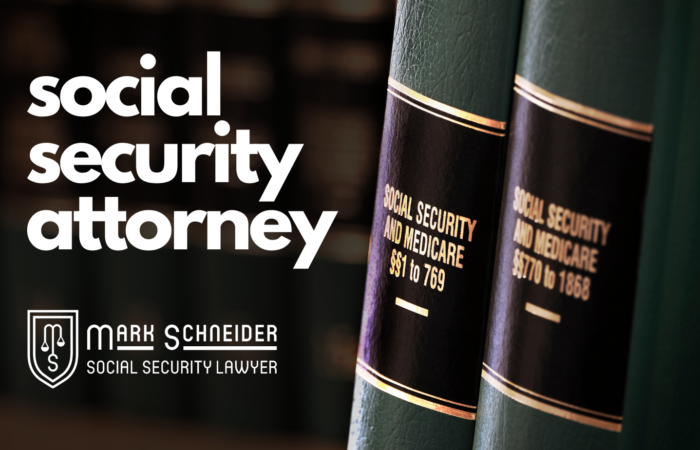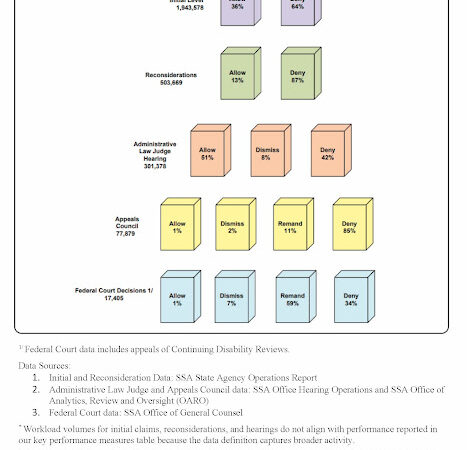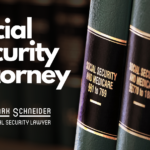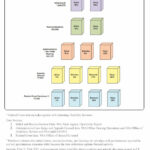If you have a patient who you believe should be on disability, there are many ways in which you can help!
- Providing comprehensive treatment notes after patients’ appointments can positively impact application decisions. SSA looks for details regarding symptoms, limitations (things patients can and cannot do), response to treatment, and how long symptoms and conditions are expected to last.
- If you receive a form (Medical Source Statement) from SSA or a lawyer’s office, including questions regarding a patient’s symptoms and limitations, kindly complete it to the best of your ability! Questions on these forms are designed to match SSA’s disability standards for different conditions. Medical Source Statement forms are attached to this email!
- If you provide an opinion, make sure it complements your treatment notes. A provider can draft an excellent statement indicating the disability of a patient, but if the limitations discussed in the opinion do not match medical records, SSA will discredit the statement as “inconsistent.”
- If your patient does not have a representative, refer them to one! Not only is it difficult to win without representation, but the disability application and appeal processes can be overwhelming and challenging to navigate. Representatives serve to support clients and execute the demanding requirements.
Have You Already Applied and Been Denied?
According to the Social Security Administration (SSA), from 2010 through 2019, only 21% of people who applied for disability were approved at the initial application level. A denial does not mean you are ineligible to receive disability benefits; you have the right to appeal SSA’s decision! The Law Office of Mark Schneider can help determine if appealing is in your best interest. Call (518) 566-6666 for a free consultation.
Social Security Disability Breakdown
To apply for disability benefits from the Social Security Administration, applicants must qualify for Social Security Disability Insurance (SSDI) OR Supplemental Security Income (SSI). Yes, some applicants qualify for both!
SSDI – Social Security Disability Insurance
What Are the Qualifications?
Eligibility for SSDI is based on work history. Individuals must have worked full-time, on the books, for at least 5 of the last 10 years to apply. If you do not have a long, consistent work history, do not worry! Fortunately, the Social Security Administration
has access to your earnings records, which is how they determine the qualification.
Can I still apply if I worked off the books?
Applicants must have paid taxes toward social security; therefore, if you worked full-time, on the books, for 5 of the last ten years, you should apply.
It is possible, but not necessarily easy, to correct the earnings record, especially if the person was an employee rather than a contractor.
How much can I earn on SSDI?
Once applicants are approved for SSDI, benefits are calculated based on lifetime earnings records.
SSI – Supplemental Security Income
What Are the Qualifications?
SSI is designed to provide disability benefits for individuals with a limited work history. To qualify, applicants cannot have more than $2,000 in assets, including bank account balances. Applicants can own one house or section of land, often one car. If an applicant is married, their spouse’s income and assets are also considered in the eligibility determination.
How much can I earn on SSI?
Unlike SSDI, SSI offers each applicant approved for disability benefits the same monthly payment of $914 for 2023, which adjusts annually to accommodate the increased cost of living.
Medical Eligibility
If an individual is eligible to apply for Social Security Disability, they must show that they have a disabling medical condition based on Social Security’s standards; consequently, an applicant’s medical records must show limitations that match Social Security’s long list of regulations. Thus, a medical provider’s opinion alone cannot win a person’s disability benefits; records must be revealing treatment, outcomes, provider’s assessments, imaging, etc.
Social Security Disability determination is based on records from providers; therefore, SSA cannot approve an applicant to receive disability if there is no evidence of treatment for physical and/or mental health conditions. Applicants deemed disabled through Veterans Affairs or private disability insurance are not guaranteed approval for disability through SSA.
What are Consultative Exams?
When applying for Social Security benefits, SSA often requires applicants to visit a facility with SSA’s predetermined medical practitioners for a consultative exam. Applicants will be notified to schedule an appointment with medical practitioners specializing in the applicant’s mentally or physically limiting conditions. If applicable, consultative exam practitioners will refer applicants for testing or imaging.
Appointments with consultative exam practitioners are predominately scheduled at the application and reconsideration application levels.
Why are consultative exams important?
Applicants should always prioritize attending consultative exams upon SSA’s request. SSA often refers to the opinions documented by consultative exam practitioners to determine an applicant’s eligibility for disability benefits. Moreover, if applicants refuse to appear at an exam, SSA will likely deny a Social Security Disability application.
How do I prepare for Consultative Exams?
Consultative exam practitioners will ask questions at the applicant’s scheduled appointment. If an applicant has physical impairments, practitioners will request that applicants perform a variety of movements, and if an applicant has psychological limitations, practitioners will conduct a memory and concentration assessment.
Applicants need to be honest and present practitioners with the magnitude of any limitation.
Practitioners only meet with applicants once and for a short amount of time. Therefore, applicants are encouraged to bring notes to guide his or her discussion to avoid forgetting any limitations the practitioner should be evaluating.
Furthermore, SSA will send applicants paperwork for the consultative exam appointment. Applicants should fill out the documents beforehand, or applicants will have to complete the forms before leaving the medical practitioner’s office, which can be an overwhelming process.
Overview of Social Security Disability Processes
The disability process can be long and complicated, consisting of numerous steps. The statistics surrounding the denial and acceptance rates of Social Security Disability applications and appeals are staggering.
Step 1: Application
If psychological or physical limitations prevent you from working, complete a Social Security Disability application online at https://www.ssa.gov/ or call your local Social Security office to make an appointment for assistance with the application. At this level, applicants complete numerous packets documenting their medical treatment, symptoms, experiences, work history, and medications. Moreover, applicants will likely attend at least one consultative exam with Social Security doctors.
If an applicant is approved at this level, they get their money and are done with the application process. However, an examination of 2021 data collected by the Social Security Administration reveals that only 36% of applications were approved, with 64% denied. This equates to over 1.2 million people being denied benefits at this stage alone.
If an applicant is denied, which is expected at the application level, the applicant files a reconsideration appeal outlined in Step 2 below.
Step 2: Reconsideration
At this juncture, applicants often seek a consultation from representatives such as the Law Office of Mark Schneider. Representatives cross-evaluate an applicant’s medical record documents with Social Security’s list of impairments and offer free advice regarding how to proceed.
While the reconsideration level is step 2 in the Social Security disability process, this is the first step to appealing a denied application. Once an applicant or representative files a Request for Reconsideration, analysts at Social Security review the applicant’s case and updated medical records to decide if the original denial was acceptable.
Often, the Social Security Administration will request more paperwork and consultative exams.
Unfortunately, over 700,000 applicants never attempted to appeal their initial denial. With approval rates of 13% at the reconsideration level, step 3 is arguably the most promising in the appeals process.
Step 3: Request for Hearing
When an applicant is denied at the reconsideration level, that decision is appealed by requesting a hearing to sit before an Administrative Law Judge. During the hearing, judges ask questions to conceptualize the applicant’s experience with their disabling conditions. If an applicant attends their hearing without a representative, judges often recommend rescheduling it until applicants secure representation. Representatives request all medical records on a client’s behalf and are proficient in Social Security Disability law; consequently, representatives draft briefs presenting arguments and medical evidence outlining the client’s disabling conditions and advocating for their inability to hold employment.
Too few applicants consider appealing, but the hearing level presents a slightly more favorable outcome, with an average approval rate of 51%! Therefore, we strongly encourage applicants to appeal by requesting a hearing.
If a person still gets denied at this level, applicants can continue to step 4 of the appeal process.
Step 4: Appeals Council
When a judge denies an applicant at the hearing level, applicants can file an appeal requesting a review of their case by the Appeals Council. The Appeals Council reviews the case and determines if the judge made the correct decision. If they disagree with the judge’s decision, then the case is sent back for another hearing with that judge so they can correct the errors the Appeals Council found. It can take up to a year for the Appeals Council to complete its review and issue a decision.
If the Appeals Council determines the judge made the correct decision, then the case would be appealed to the Federal Court, which is step 5 of the Social Security Disability process.
It is discouraging; only 77,000 applicants pursued the Appeals Council. Although 85% of Appeals Council cases were denied in 2021, there is hope for those who choose to take their case to Federal Court (step 5), as the approval rate for remanded cases – those sent back to the judge for re-assessment – increases to 59%!
Step 5: Federal Court and Re-applying
If an applicant is denied at the Appeals Council, the next step is to request a civil suit appeal to the Federal District Court. Only around 17,000 cases nationally proceeded to federal court in 2021. This process can take over two years to get a decision, and it is nearly impossible for an applicant to represent themselves in federal court successfully. The Law Office of Mark Schneider will assess referrals from other Social Security Disability representatives and our current clients’ cases and often proceed to Federal Court.
Mark Schneider is admitted to practice at the U.S. Court of Appeals and the U.S. Supreme Court. He is one of few lawyers with extensive experience and exceeds a 50% success rate, representing over 175 applicants on Social Security appeals in federal court.
If the federal court reverses the denial by the Social Security judge, then another hearing is scheduled with the same judge to fix the mistakes found by the federal court judge. Generally, when the federal court reverses the Social Security denial, the applicant will be granted benefits at the new hearing. Should the District Court deny
the appeal, the lawyer can continue to appeal to a higher-level federal court, the U.S. Court of Appeals.
If an applicant still qualifies to apply for disability, they can also submit a new application, outlined in step 1 above, while their current case is in federal court. This offers applicants a chance to earn benefits with their new application while they wait two years for a federal court decision.
Unfortunately, it is challenging to receive disability benefits without appealing a denied application, and as noted above, this can take years. We understand that receiving a denial is disheartening, but it is a normal part of the process and should not be viewed as the end of the road. Support from a lawyer or non-attorney disability representative makes navigating these hurdles easier!
If you live in the Franklin County, Essex County, Clinton County, Warren County, Washington County, Albany County, New York area or the Malone, Massena, Ogdensburg, Potsdam, Canton, Plattsburgh, Lake Placid, Elizabethtown, Saranac Lake, Chateaugay, Ticonderoga, Moriah, Peru, Mooers, Champlain, Paul Smiths, Duane, St. Regis, Moira, Brushton, North Bangor, NY area, the Law Office of Mark Schneider is here to assist you! Please do not hesitate to contact us to schedule your FREE consultation or to obtain further information!






